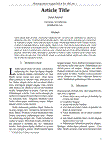| Sumario: | The finfish and crustacean aquaculture sector is still highly dependent upon marine capture fisheries forsourcing key dietary nutrient inputs, including fish meal and fish oil. This dependency is particularly strongwithin compound aquafeeds for farmed carnivorous finfish species and marine shrimp.Results are presented concerning the responses received from a global survey conducted between December2006 and October 2007 concerning the use of fish meal and fish oil within compound aquafeeds using aquestionnaire sent to over 800 feed manufacturers, farmers, researchers, fishery specialists, and otherstakeholders in over 50 countries. On the basis of the responses received, it is estimated that in 2006 theaquaculture sector consumed 3724 thousand tonnes of fish meal (68.2% total global fish meal production in2006) and 835 thousand tonnes of fish oil (88.5% total reported fish oil production in 2006), or the equivalentof 16.6 million tonnes of small pelagic forage fish (using a wet fish to fish meal processing yield of 22.5%and wet fish to fish oil processing yield of 5%) with an overall fish-in fish-out ratio of 0.70. At a speciesgrouplevel, calculation of small pelagic forage fish input per unit of farmed fish or crustacean output showedsteadily decreasing fish-in fish-out ratios for all cultivated species from 1995 to 2006, with decreases beingmost dramatic for carnivorous fish species such as salmon (decreasing from 7.5 to 4.9 from 1995 to 2006),trout (decreasing from 6.0 to 3.4), eel (decreasing from 5.2 to 3.5), marine fish (decreasing from 3.0 to 2.2)and to a lesser extent shrimp (decreasing by 1.9 to 1.4 from 1995 to 2006. Net fish producing species in 2006(with fish-in fish-out ratios below 1), included herbivorous and omnivorous finfish and crustacean species,including non-filter feeding Chinese carp (0.2), milkfish (0.2), tilapia (0.4), catfish (0.5), and freshwatercrustaceans (0.6).
|
|---|
